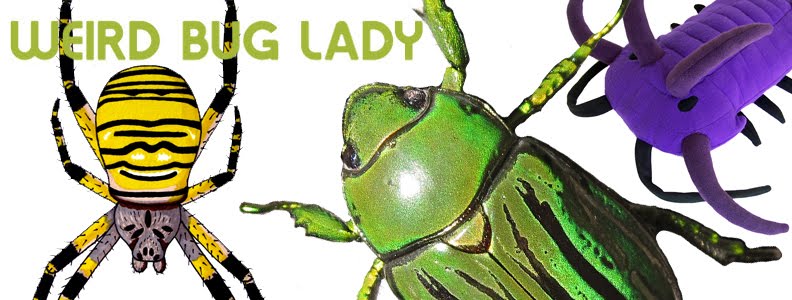Yesterday I was summoned to a neighbor's house, to see what I could do about a snapping turtle in their garden.
Sure enough, it was a big beautiful Chelydra serpentina.
 I would estimate the shell length was about 12", and the tail was at least another 6". It had a bad right eye, mostly closed up, though I could not observe any damage.
I would estimate the shell length was about 12", and the tail was at least another 6". It had a bad right eye, mostly closed up, though I could not observe any damage.Now, removing it from the garden, where it had become trapped, was the issue. Don't want a big snapper around kids and pets.
I remembered from my reptile field guide (and a question on my herpetology final exam) that you can lift a snapping turtle safely by the tail. Their tails are very thick and sturdy, and having never handled a snapper before, I thought I'd try it out. I picked it up without much protest (though a few snaps into the air were rather alarming), and carried it into the woods to a stream (which it could follow to a pond).
Now, after some more reading, I've discovered (as I had suspected) that it is actually not a good idea to pick up a snapping turtle this way - it can damage the tail or spine. The best method is to grasp the back end of the shell, if you can get a good enough grip. You can also grasp the front edge of the shell above the head, with your other hand holding the back end. This seems to be the most appropriate way to hold them, but it's a little intimidating!
Like this... (original photo found here)
 So if the turtle returns and needs to be removed, I might try picking it up that way, if the turtle seems calm enough. Now I know better (and I think that field guide section on collection techniques should be changed). Though I might also just do a tail lift into a bucket to carry it!
So if the turtle returns and needs to be removed, I might try picking it up that way, if the turtle seems calm enough. Now I know better (and I think that field guide section on collection techniques should be changed). Though I might also just do a tail lift into a bucket to carry it!I was also curious about the sex, but did not feel like poking around too long and further annoying the turtle, especially without being sure what I should look for. I did have my neighbor get a photo of the underside of the turtle, though, while I was holding it. I can see the cloacal opening is rather close to the base of the tail. According to the diagrams in this study, that would make her a female.
Have you ever encountered a snapping turtle? Did you try to handle it? Chase it away? What techniques did or didn't work? I won't always be available when a snapper visits one of our neighbors, and want to brainstorm some other techniques for shooing a large angry turtle into the woods.











6 comments:
Despite your photographic evidence, I am completely intimidated by the thought of getting my fingers/hands anywhere near a mouth like that. I've always grabbed a stick to push them with - sometimes they bite the stick and hang on, and then I just drag them on across the road.
I think tail lifting is okay with smaller individuals, and it's only the bigger, heavier individuals that this presents a risk of injury.
You are brave - as a girl you rock!
that turtle is a beauty!
ive seen one lured away buy feeding
it a banana. it was so cool to watch.
We found one by the road once, near a marsh, on the wrong side of a chain-link fence. Not wanting it to get run over, we did manage to pick it up by the tail, but the fence turned out to be too tall to hoist a heavy turtle over safely, especially while it's doing all it can to keep from being hoisted. Fortunately, one of us had a plastic storage bin, so we used that to carry the turtle. So, my advice: contain the turtle for transport.
By the way, I wouldn't risk a bite if I were you. Word has it that those jaws can crush bone, and I bet they'd snip a finger off if they got into the joint between bones.
Call the Schuylerville Library. There is a local gentleman who has done a presentation on bugs there the past two summers, and he also has a rather large snapping turtle. It was the first time I saw one up close. Since then, I've seen one in the old canal along the Hudson -- although not too close!
I've always been told to pick them up by the tail, but can see why that wouldn't be a good idea.
When I was a kid, we found one in the middle of an old logging road whose shell was at least two feet long. It was way too big to carry! My father had to pull it (by the tail) far enough out of the way to drive around it, as it was too big to drive over!
I've read several places that they only grow to 18" (plus tail), but I've seen at least three that were much larger than that (in the wilds of Maine).
The suggestion to pick up a snapper behind the head is not quite accurate. There are two species of snappers - the Common Snapping Turtle, and its larger relative Macrochelys temminckii, the Alligator Snapping Turtle. It is imperative to know the difference - Only the latter can be picked up in this manner as the alligator has a short neck. The common snapper is capable of stretching its neck out enough to turn around and bite off a finger! It has happened to "well meaning" roadside "helpers".
Post a Comment